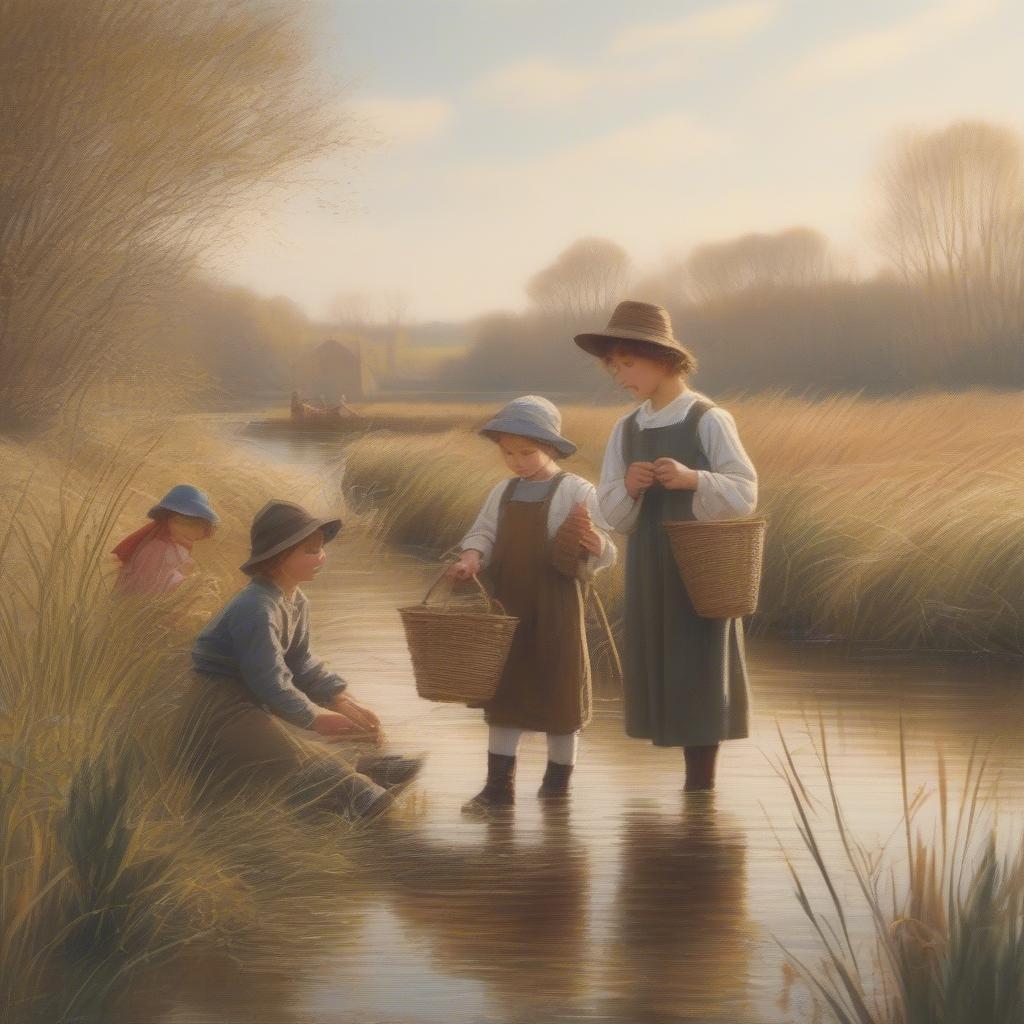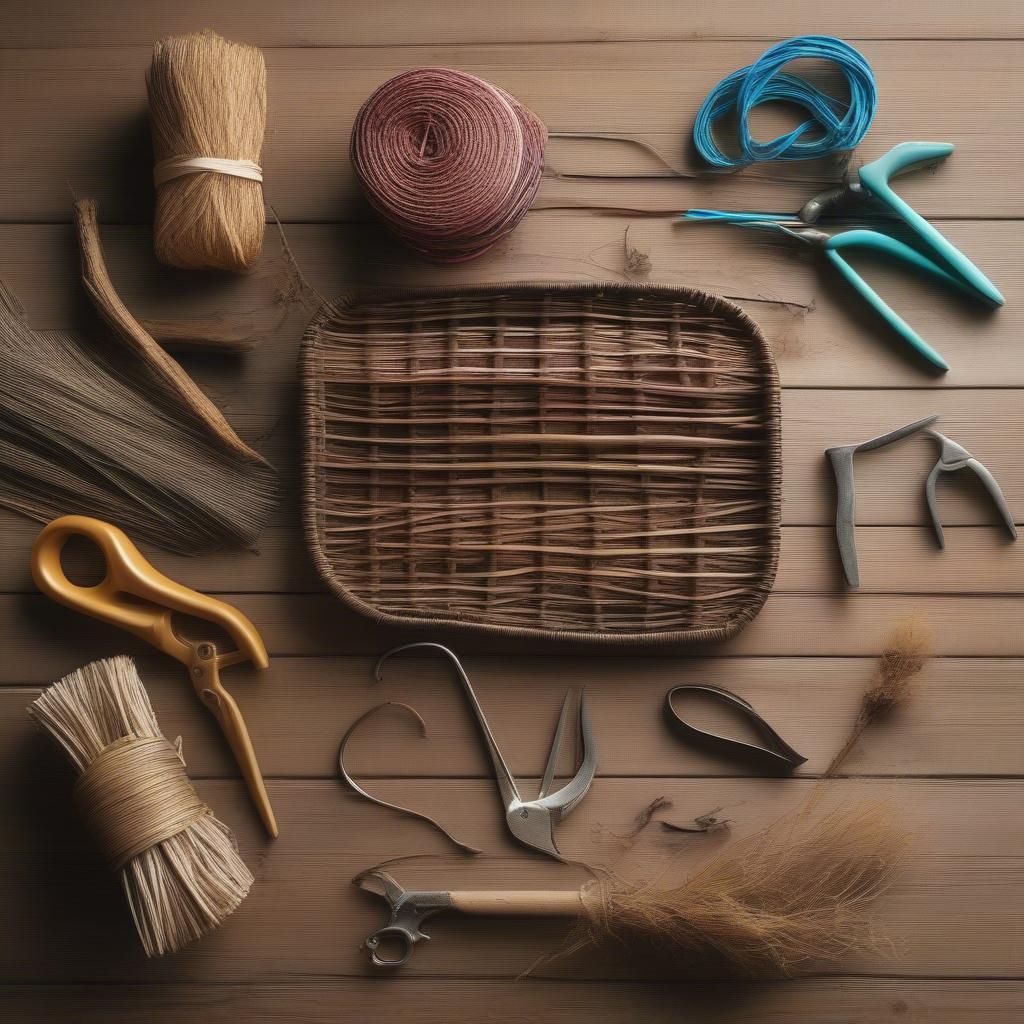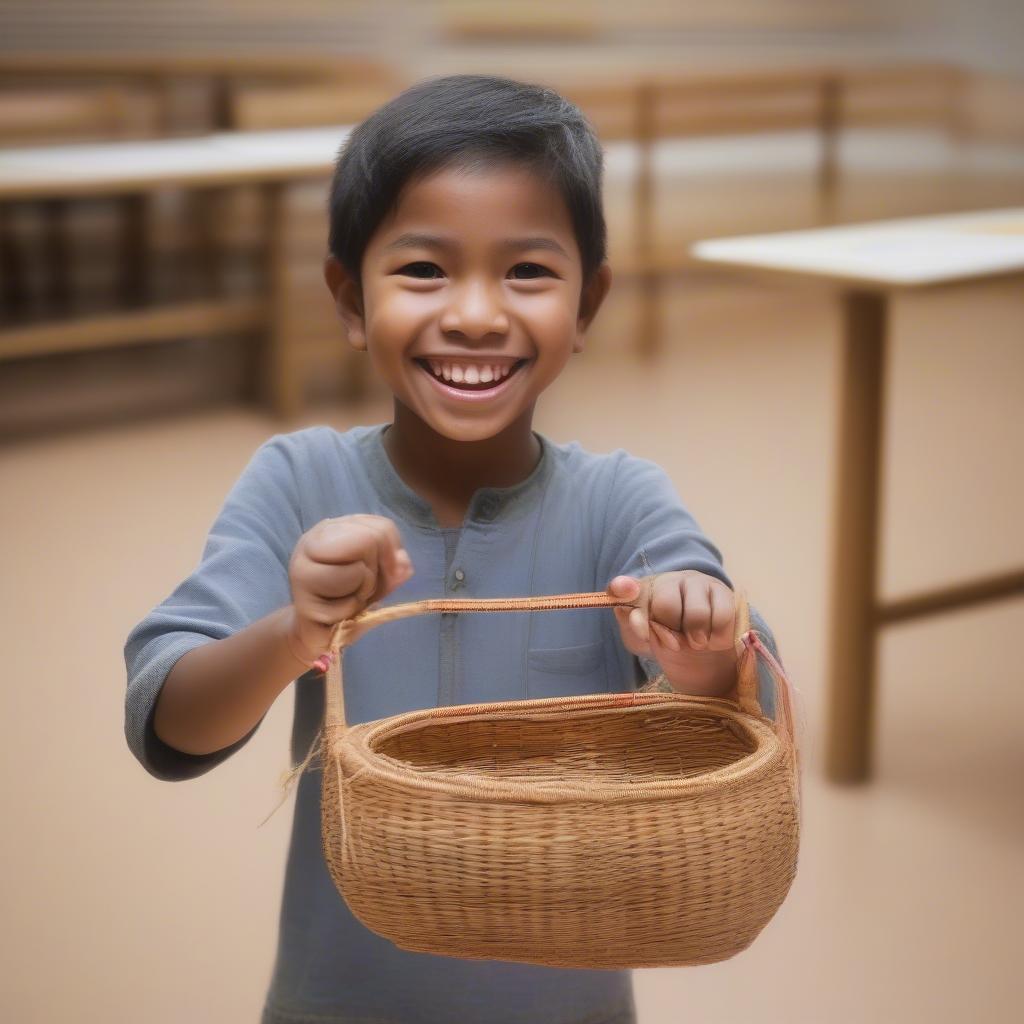Basket Weaving
Charlotte Mason Basket Weaving: A Timeless Craft for Modern Learners
Charlotte Mason Basket Weaving offers a unique blend of creativity, practicality, and educational value. This engaging craft, rooted in the Charlotte Mason educational philosophy, provides children with valuable life skills, fosters a connection with nature, and nurtures an appreciation for handcrafted items. From simple coiled baskets to intricate woven masterpieces, exploring this craft opens a world of possibilities for both children and adults alike.
Why Charlotte Mason Embraced Basket Weaving
Charlotte Mason, a renowned British educator, advocated for a holistic approach to education that emphasized hands-on learning, nature study, and the development of good habits. Basket weaving fit perfectly within her philosophy. It provided a tangible connection to nature through the use of natural materials like reeds, willow, and grasses. The process of weaving, with its inherent challenges and rewards, fostered patience, perseverance, and attention to detail. Moreover, the finished product instilled a sense of accomplishment and pride in craftsmanship.
Connecting with Nature Through Basketry
One of the core principles of the Charlotte Mason method is the importance of spending time in nature. Basket weaving encourages this connection by utilizing materials found in the natural world. Gathering and preparing these materials becomes a learning experience in itself, allowing children to observe plant life, understand its properties, and appreciate the beauty of natural resources.
 Children Gathering Reeds for Basket Weaving
Children Gathering Reeds for Basket Weaving
Developing Practical Life Skills
Charlotte Mason believed that education should equip children with practical skills for everyday life. Basket weaving provides just that. It teaches valuable hand-eye coordination, fine motor skills, and problem-solving abilities. These skills translate into other areas of life, from tying shoelaces to tackling complex tasks that require dexterity and precision.
Getting Started with Charlotte Mason Basket Weaving
Beginning your journey with Charlotte Mason basket weaving doesn’t require expensive materials or complex techniques. Simple projects using readily available materials like newspaper or yarn can introduce the basic concepts of weaving and allow children to experience the joy of creating something with their own hands.
Choosing the Right Materials
The choice of materials will depend on the project and skill level. Beginners might start with readily available materials like raffia or yarn. As they progress, they can explore natural materials like reeds, willow, or grasses.
 Basket Weaving Materials – Raffia and Willow
Basket Weaving Materials – Raffia and Willow
Simple Basket Weaving Projects for Beginners
A great starting point is a simple coiled basket using raffia or yarn. This technique involves wrapping the material around a core and stitching it in place to create a spiral shape. This project introduces the fundamental principles of weaving and provides a satisfyingly quick result, boosting confidence and encouraging further exploration.
Advanced Basket Weaving Techniques
As skills develop, more complex techniques like twining, plaiting, and wickerwork can be explored. These techniques allow for the creation of intricate patterns and more elaborate basket designs. Learning these techniques provides a deeper understanding of the craft and opens up a world of creative possibilities.
The Educational Benefits of Basket Weaving
Charlotte Mason basket weaving is more than just a craft; it’s a valuable learning experience. It fosters creativity, patience, and problem-solving skills. It connects children with nature and provides them with a sense of accomplishment.
“Basket weaving provides a tangible link to history and culture,” says Emily Carter, a seasoned artisan and educator. “Children learn about traditional crafts and the importance of handmade items in different societies.”
 Child Proudly Displaying Finished Basket
Child Proudly Displaying Finished Basket
Conclusion
Charlotte Mason basket weaving provides a rich and rewarding experience for learners of all ages. This craft connects us with nature, fosters creativity, and teaches valuable life skills. By incorporating basket weaving into your educational journey, you’ll be embracing a timeless tradition that continues to inspire and enrich lives today. So, gather your materials and embark on this creative adventure!
FAQ
-
What age is appropriate for basket weaving? Children as young as five can begin with simple projects using easy-to-manipulate materials like raffia or yarn.
-
Where can I find basket weaving supplies? Craft stores, online retailers, and even your local garden center may carry basket weaving materials.
-
What are the best materials for beginners? Raffia, yarn, and reed are good starting materials for beginners.
-
Are there online tutorials for basket weaving? Yes, numerous online resources and video tutorials can guide you through different basket weaving techniques.
-
Can I use recycled materials for basket weaving? Absolutely! Newspaper, fabric scraps, and even plastic bags can be repurposed for basket weaving projects.
Further Exploration
For more information on Charlotte Mason’s educational philosophy, explore our articles on Nature Study and Handicrafts.
Need help with your basket weaving journey? Contact us at Hanoi, Vietnam or Tech Avenue, Suite 12, San Francisco, CA 94105, USA. Our 24/7 customer service team is ready to assist you.
